(This is a continuation of parts 2 & 3 of the first 6 weeks of my pilgrimage)
From Phoenix I go to Ajo, a small town of roughly 3,000 people, just north of Organ Pipe Cactus National Monument, about 45 minutes north of the border with Mexico.
In Ajo I experience hospitality, discovery, kinship, and profoundly beautiful and tragic desert landscape. I went to Ajo to learn from the Ajo Samaritans, a group of mostly retiree aged folk who hike life-saving supplies into the remote desert. My first water drop is the morning after I arrive. Here is an excerpt from my journaling of that experience:
We are driving out into the mountains as the sun rises over the miles and miles of saguaro. It is breathtaking, and the people I am driving with are lovely, and we are sharing stories of lament, concern, talking immigration politics, talking immigration realities, talking all the stuff that you talk when you move into this world of understanding just how tragic and infuriating and unjust our immigration system really is. We are going into the desert, after all, to drop gallons of water, snacks, and socks in remote areas where we suspect migrants cross in attempt to enter the U.S. undetected. Since the border became more and more restricted in the 90s (thanks Bill Clinton and NAFTA), people trying to enter the United States in search of work, safety, or family reunification and devoid of legal opportunities to do so have been forced to cross the border in more remote areas like the Sonoran Desert. Thousands of people have died on this journey since the late 90s. Hundreds continue to die every year, mostly from exposure and hyperthermia.
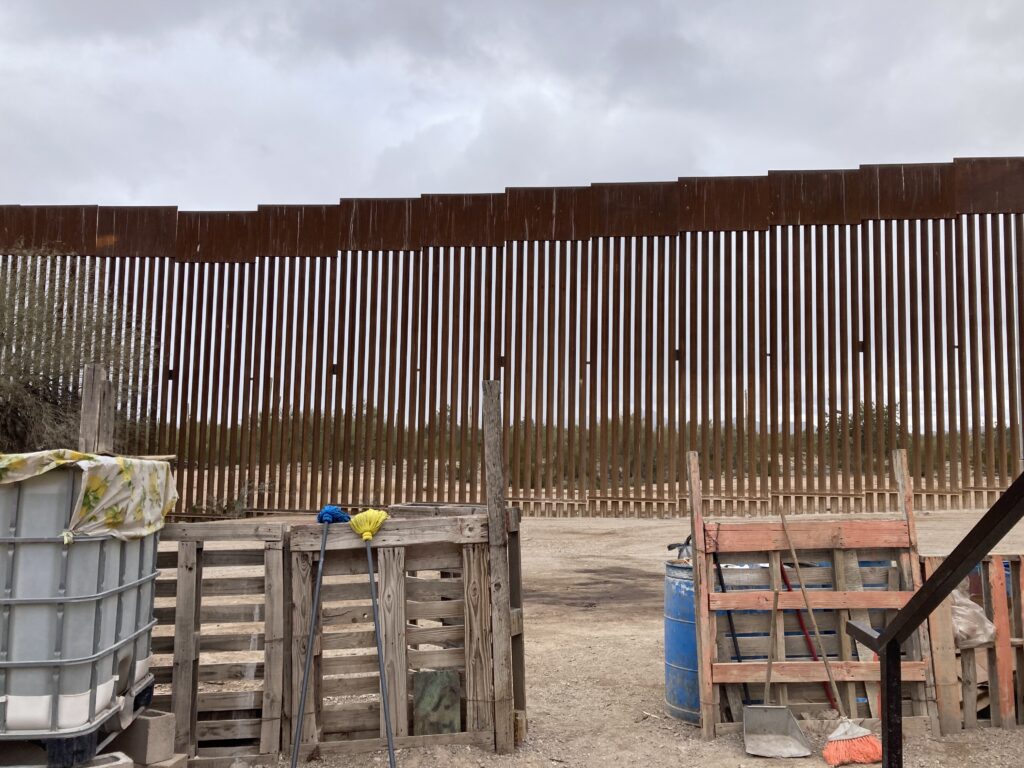
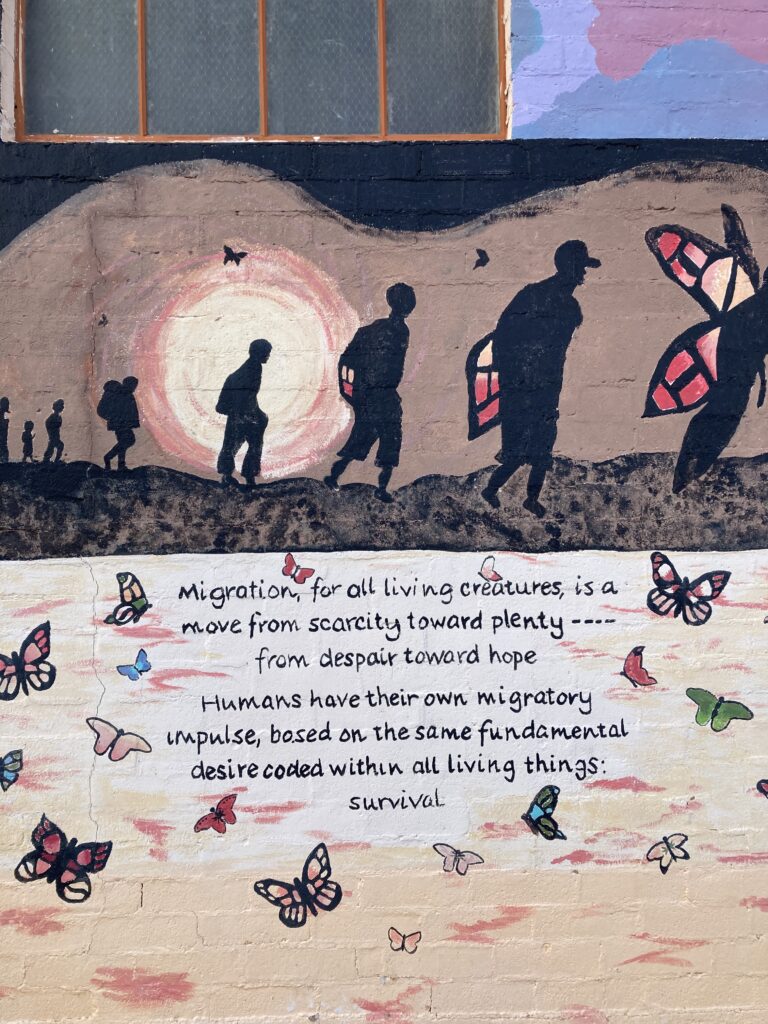
I would think that most people are not aware of this reality. The erasure of migrants who die in the desert is just another policy, I guess, to secure the border. Walls, sensors, agents, helicopters, ATVs, X-Ray machines, horses, rivers, mountains, valleys, the sun, the cold, the lack of rain, the lack of public outrage. As we hike through the hills, wandering around chollas and creosote and lots of other desert plants whose names I do not know, I learn more about the other volunteers and how they arrived here. They are all at least 30 years older than me, if I am not mistaken. Our facilitator is 63. She has so much information and shares it freely. She helps me understand the signs that sites have not been used, that perhaps routes have changed. We pack out any empty bottles or trash that we find, write the date and a note in Spanish on each new bottle that we leave (“No more deaths! Until a world without borders!”), and the facilitator keeps track of how much usage is noted at each site. We repeat this cycle a few times, as there are various drops at different locations. The truck we ride in gets lots of new desert stripes as we drive through the narrow, rocky, steep corridors lined with palo verdes and ocotillo.
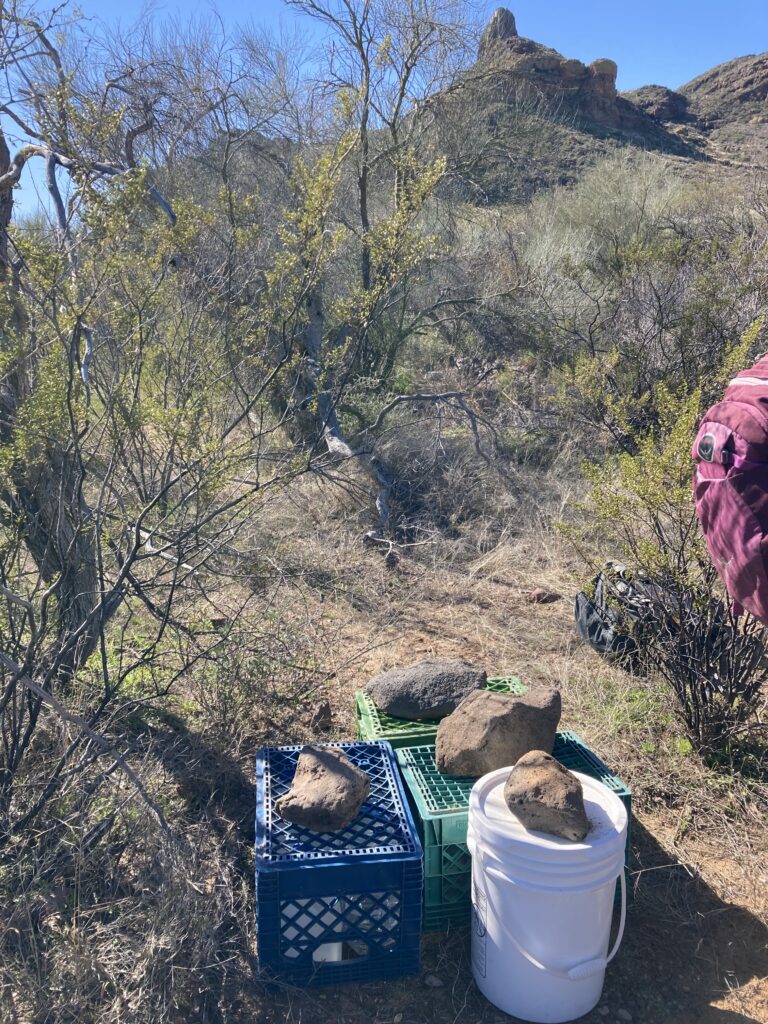
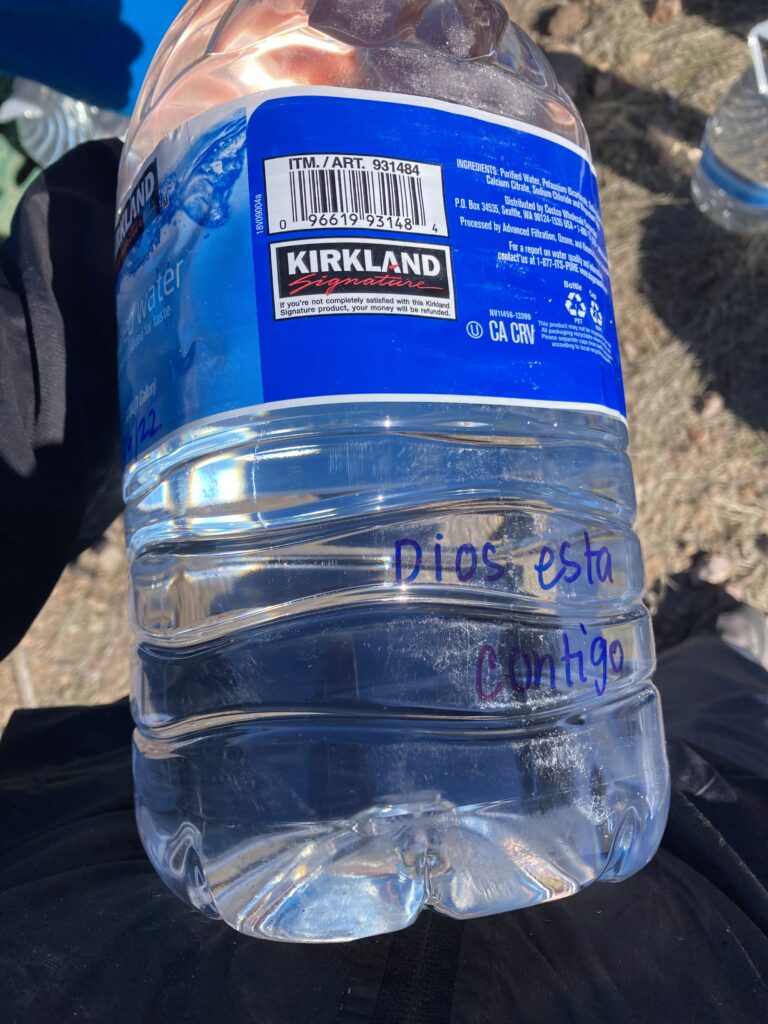
The Ajo Samaritans “continue the historical work of providing water and other humanitarian aid to travelers in the desert, regardless of their immigration status.” There are also Tucson and Green Valley Samaritans, I learn, as well as Humane Borders and No More Deaths (Phoenix AND Tucson) who participate in similar work in this particular area of the continent. I feel so so excited and eager to connect with these people in this work that is brand new to me.
Most of the members of the Ajo Samaritans are retired and from somewhere else. They each contribute what they can – vehicle maintenance, supply purchases, support with the aid office, facilitation of hikes, the list goes on. They operate on consensus based decision making, which shows in the way they communicate with one another. Every next step is an invitation with openness to feedback. They check in with each other regularly to see how each person is feeling during the hike. Even those of us who are visiting are asked for our thoughts on all of the decisions. Their core values are nonviolence, consent, transparency, solidarity, and human rights.
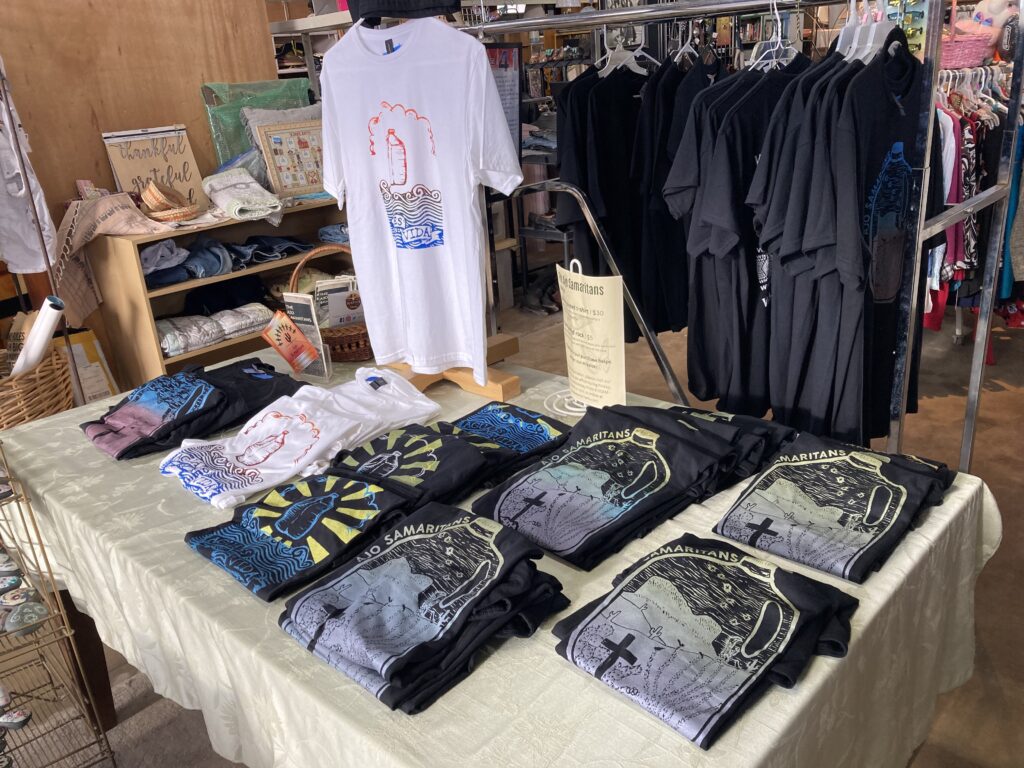
One of the Samaritans who welcomes me into her temporary home is Carol, who spent the previous chapter of her life working for the Colorado Department of Labor in the Trade Adjustment Assistance program, assisting people who lost their jobs as a result of the expansion of free trade across the Americas. Carol shares with me her story and I gratefully share mine. Years after she retired, she participated in a 9-month course on social justice with a cohort from her Methodist church called “Justfaith“, which gave birth to a community of fellowship that inspired a group of 8 families to move themselves into the city of Denver, create a common home (complete with ceiling renovations to accommodate solar panels), and host book clubs, meditations, people in need of a place of rest, Monday night dinners. I took notes when she told me about this because I knew if I didn’t I would forget the details, and I was loving hearing the details!
Carol blessed me with half-decaf, half-caffeinated coffee, pimento cheese sandwiches, a kind listening ear. Our lives somehow paralleled each other at that moment: she sold her house and is traveling while awaiting the opening of a senior intentional eco-village community in Denver. She has spent time in Florida, Costa Rica, and now Ajo. In Florida, she connected with a church group cooking lunch and dinner for folks who were devastated by Hurricane Ian. Carol teaches me how to slow down and practice acceptance. I am so grateful that I was able to receive her hospitality – I am reminded that having a posture of openness and flexibility somehow always brings me surprise, delight, love, and connection!
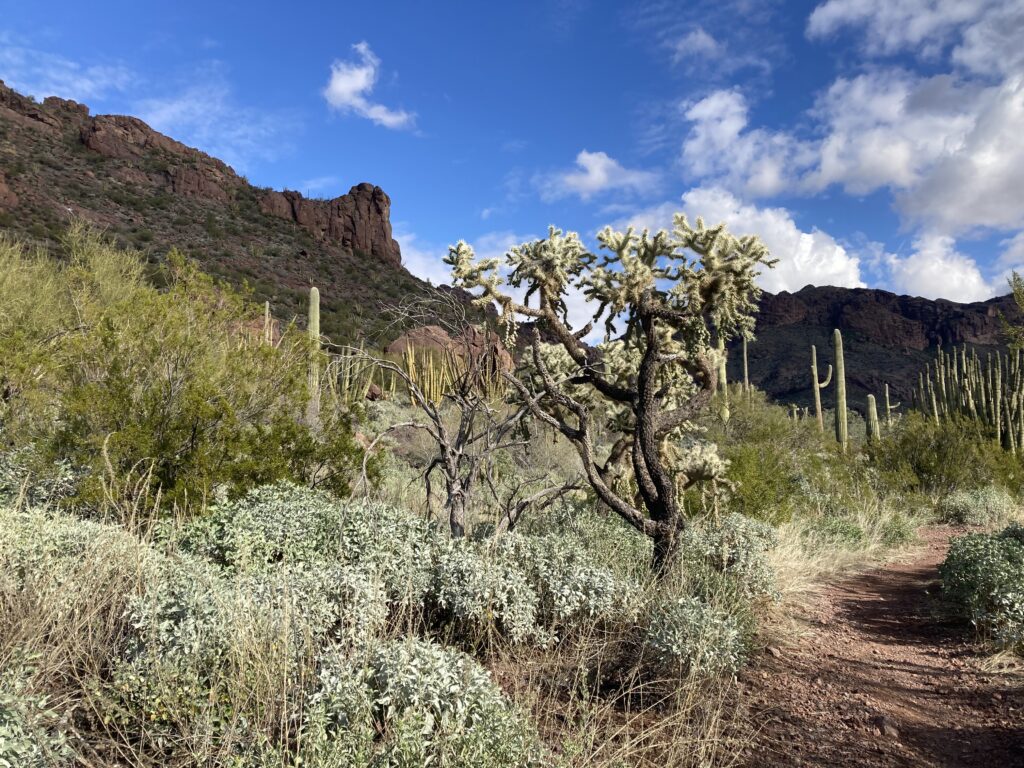

My time in Ajo was so meaningful, so gentle and tender and filled with companionship. I went to Sonoyta, Sonora twice, hiked into the surrounding desert lands many times, went to Church, helped screen print t-shirts. I buried a deceased packrat, learned about the different regulations on humanitarian aid water drops in the different types of land surrounding Ajo (Bureau of Land Management, National Monument, National Refuge, Tohono O’odham Reservation) and the restrictions they place on humanitarian aid activity. I learned more about the prosecution of Scott Warren and some of the impact that has had on the Samaritan community. It gifted me with new and profound connections, with curiosity to learn more, with warmth for having received such hospitality in a small town in the middle of the Sonoran Desert!
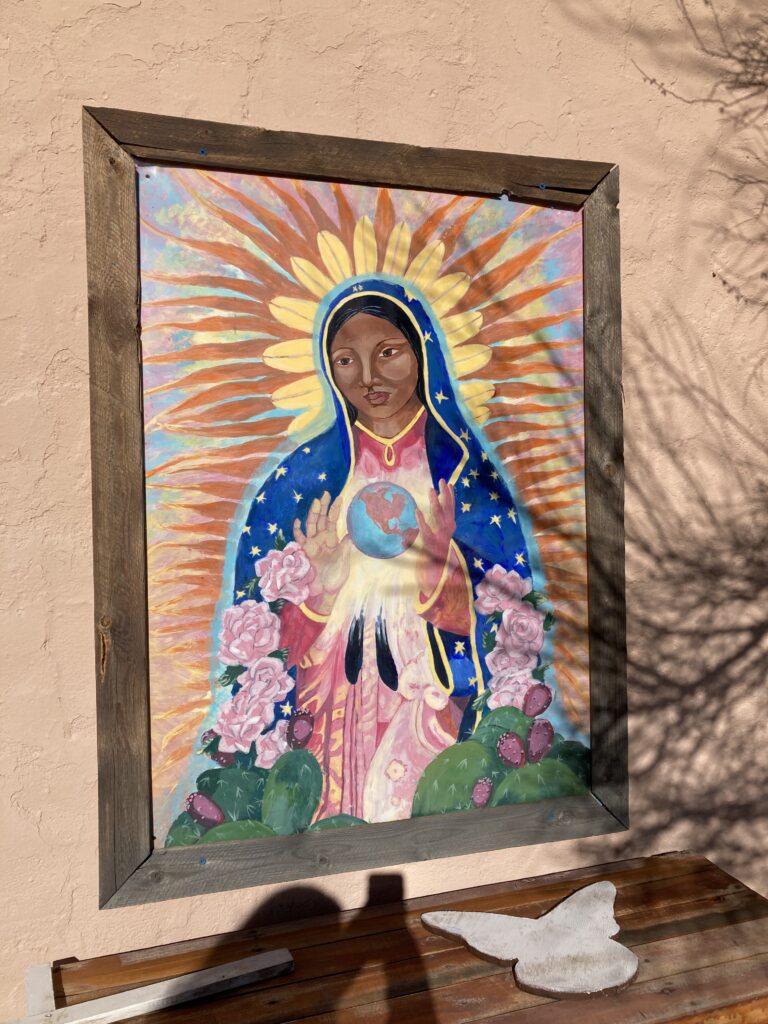
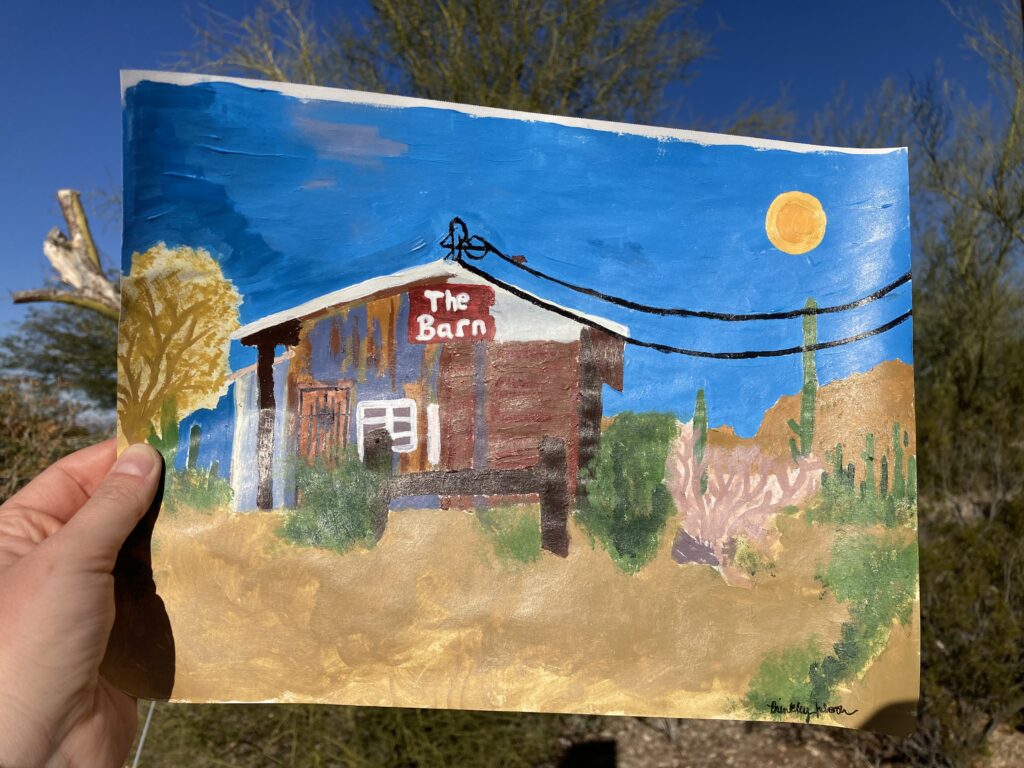
Stay tuned for part IV of the first six weeks of my travels… 🙂
